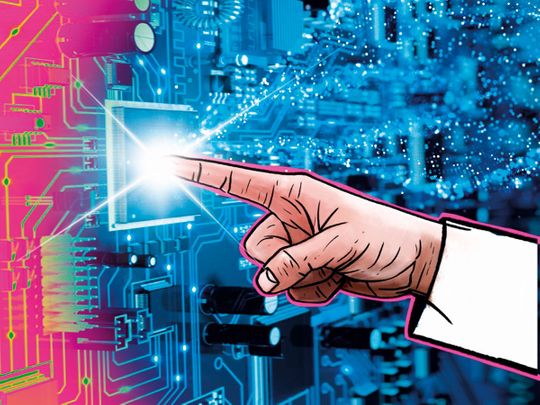
We’ve all heard the warnings of an impending dystopian future.
According to Deloitte, an estimated 35 per cent of UK jobs are at high risk of automation in the next 10 to 20 years, while in the past 15 years technology already contributed to the loss of over 800,000 jobs. Market research firm Forrester predicts 6 per cent of US jobs will be lost to robots and automation by 2021, with the main losses being felt in transportation, logistics, customer services, banking, retail and health care.
Painting a bleaker picture, University of Virginia Darden School of Business Professor Ed Hess says nearly half of US jobs could be automated, including retail store clerks, doctors who scan X-rays for disease, administrative workers, legal staffers, and middle managers. The Bureau of Labor Statistics drills in the final nail, presenting data that showed five million US manufacturing jobs have already disappeared.
What role can humans continue to play in an increasingly automated workplace?
According to Deloitte, the same technology that triggered job losses has simultaneously created over three million new jobs more highly paid than the ones lost. This reinforces the theory that technology will likely lead to a shift in employment roles and patterns, rather than the elimination of the human workforce altogether. In fact, 65 per cent of children entering primary school today will be employed in jobs that do not yet exist, according to the World Economic Forum in its 2016 report “The Future of Jobs”.
Technology will continue to further provide employees with the scope to be more effective in their roles. For example, AI and machine-learning software will continue to work most effectively when supported alongside human skills, complementing and augmenting capabilities, not replacing them.
CEBR economist David Whitaker states that those who seek to remain employed must sharpen skills that machines can’t master, such as unpredictable work or the need for an emotional human connection. At present, machine learning remains limited and flawed.
It is therefore key to understand when automation is, and isn’t, appropriate. Machines cannot provide exceptional human-to-human customer service as they lack the depth of imagination required for highly creative problem solving, something that isn’t possible to be programmed into logic boards. Those machines that make high-risk decisions still require humans to critically assess or approve them, as we currently can’t trust technology to make decisions with life-and-death implications without us.
The future is about fusing humans with technology, not technology operating alone.
A paper published by the US government on the possible economic impact of artificial intelligence and automation viewed the issue “through a policy prism”. It stated that “whether AI leads to unemployment and increases in inequality over the long run depends not only on the technology itself but also on the institutions and policies that are in place.”.
Robots aren’t taking jobs, rather, technology is changing the spheres of possibility. The real risk in the next economy is not being replaced, it’s missing the opportunity by not future-proofing ourselves.
So where does this leave us? It could be argued that we are, in fact, not facing a case of Human vs. Machine. Rather, the future reality will be “Human + Machine” working together for the greater good. Indeed, technology will continue to stride unabatingly forward, and it would be foolish to argue otherwise.
But some things remain fundamental, and interpersonal communication, creative problem solving, customer service and complex data analysis will continue to be just a few of them — for now. We must remember that just because technology is available, it doesn’t mean it’s always going to be the best solution in every situation.
In this sense, technology must be used for efficiency, aiding us with information, insights and decisions quickly, so we have more time and head space, for productive, meaningful and creative tasks. Machines will free up human time by performing low skill or time-consuming tasks, while humans can spend more time being human, connecting with others, practising well-being.
Additionally, with all these available human hours, we can leverage the time to increase the output, efficiency and drive up more business.
Society must be equipped with the knowledge and understanding of how to maximise the use of technology and live in a harmonious parallel. Therefore, investment in future-proof education in an age where jobs require constant reskilling and upskilling is imperative.
It will become incredibly challenging to know everything or to keep up to date with all the changes around us in the future. The question then arises as to how quickly can we learn something and how efficiently can we work in groups?
There are some great examples of 21st century learning solutions on the market that are geared to specifically address these challenges. The very best of these are focused on automating tasks through machine learning, thereby freeing up time for teachers.
The very best of these are also engaging students by bringing real-world links in the learning spaces. They are mimicking the future workplace and its ebbs and flows, providing means to bring the community together, improving a state of well-being and ensuring that every learning outcome has a real-world link and a moral purpose.
To nurture human capital for sustainable growth in the future, we must drive change in education to ensure we are adequately preparing the talent pool for this future “Machine + Human” workplace. It’s about focusing on human ingenuity, intelligence, emotional capital, tolerance and well-being to achieve more, whilst allowing machines to do machine intended tasks.
This will help us contribute directly to the knowledge-based economies by excelling in group-based projects, acquiring a fast learning curve and preventing workplace fatigue or burnouts. The world of tomorrow is uncertain, and it is, therefore, our responsibility to prepare our youngest learners for a future that is inextricably tied to machines.
Aaditya Tangri is CEO of Kalebr Technologies.











